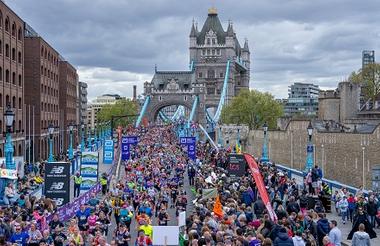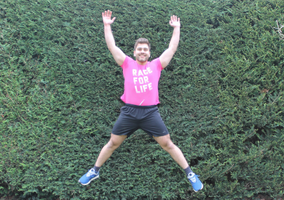Mass fundraising events are “finally showing a robust recovery from the pandemic, with participation levels not only returning to but exceeding pre-pandemic figures”, according to a new report.
The Mass Participation Pulse 2025 report says that the increase is “being driven by a diverse and growing demographic of particularly younger and female participants, who are engaging more frequently and spending more on events and related activities”.
However, the report by consultancy Massive warns that many members of the public are cutting back on their mass events participation due to having less disposable income.
Participant behaviours and demographics
Massive surveyed 11,499 mass events participants from the UK and Ireland in October and November last year.
The report finds record ballot entries for events including the London Marathon and Great North Run, and growth reported by event entry and fundraising platforms.
Last year, some 9% of respondents had been running, swimming or cycling for two years or less compared with 26% taking up their sport in the last two years this year.
New participants were younger, with the average age of respondents falling from 49 to 44 and the under-35s making up nearly one-third of responses. Female participants made up 65% of the under-35s.
“As in previous years, we see that events in general, and running specifically, attract people with higher-than-average levels of household income, with 76% reporting income levels above the UK median and 23% with household incomes above £100,000”, the report says.
“As a group, they also rank higher than the UK average for having a degree-level qualification, with 78% of females having a degree or higher qualification versus 64% of men.”
As in the past two years, most respondents are runners (79%), including trail runners, with 43% citing half marathons as their favourite distance.
The report says while there is less data from other sports, cycling and triathlon were more popular with men than women, “who are also overrepresented in marathons and even more so at ultra distances”.
Cost-of-living concerns
Published every year since 2022, the report previously “found lack of fitness to be the main barrier to increased participation post-Covid-19”.
However, fitness was reported as an issue by only 24% of participants in 2024 compared to 43% of participants in 2023.
Instead, the report says: “Having less disposable income is now the biggest single factor in people cutting back on the number of events they take part in.
“Of those participating in fewer events in 2024, 46% said this was due to having less spare cash.”
Among the under-35s, the report finds that the biggest barrier to taking part in more events is “finding the time”.
However, the report says more people expect to see an increase in disposable income in 2025 than last year (20% compared with 10% at the end of 2023) while fewer people expect to have less to spend (31% compared with 45% last year).
Meanwhile, 32% of respondents expected to increase the number of events they plan to do this year compared to 17% expecting to participate in fewer events.
“This is backed up by data from our partners, with entries for 2025 already ahead of this point last year and a similar story around event fundraising pages,” the report says.
Role of charities for organisers
Looking at the role of charities for organisers, the report says there seems to be “a win-win relationship” between the two.
“Charities help to drive event recruitment as a significant way for participants to hear about events, and events support charities in recruiting new fundraisers,” it reads.
“Notably, 48% of those who fundraised for charities through participating in an event were supporting that charity for the first time and on average, participants raised £1,425, meaning that the event participants we spoke to for the pulse raised well over £3m in 2024.”
The report finds that 58% of fundraisers were “quite likely” and “very likely” to fundraise for a charity again compared to nearly 20% who did not expect to support a charity again.
When asked how they usually hear about the mass participation events they take part in, respondents chose social media as their most frequently used source (53%), followed by friends/family already taking part (40%) and a charity (40%).
Related articles












